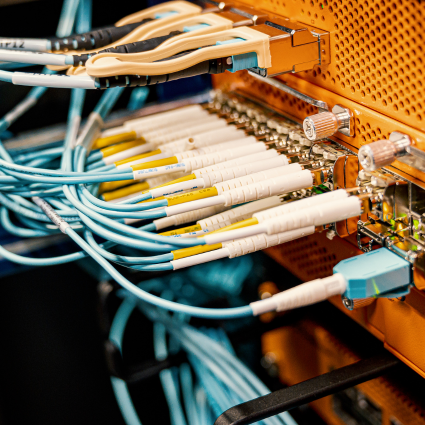In a previous blog post, we explored various methods to troubleshoot Zoom connectivity and performance issues. The post covered essential troubleshooting steps such as testing network latency, packet loss, and jitter using tools like NetBeez. It also addressed how to interpret Zoom’s built-in -statistics for call quality. These methods help IT teams diagnose common problems like poor audio, video freezing, or connection drops. However, as Zoom’s troubleshooting capabilities continue to expand, it has introduced additional endpoints and tools to enhance end-user performance testing.
To their credit, Zoom has significantly improved its telemetry and troubleshooting capabilities by adding more testing endpoints accessible through the Zoom laptop client, and I’d like to write about these new capabilities because they also show what Zoom uses for as endpoint testing to measure performance to their infrastructure.
Below is a screenshot of this new testing option, and it’s accessible following: Settings → Statistics → Run Test Meeting → Ping Test → Smart Test → Start Test
It can also be accessed by the following shortcuts:
- Ctrl+Alt+Shift+D for Windows
- Cmd+Option+Shift+D for Mac
These endpoints are:
- PAAP collection url: us.telemetry.zoom.us
- Async IM domain: async.zoom.us
- File: file.zoom.us
- File express for image and audio: us02file-ia.zoom.us
- Integration domain: https://applications.zoom.us
- Log domain: logfiles.zoom.us
- Meeting domain: https://us02www3.zoom.us
- Mesh domain: https://us02zdm.zoom.us
- Monitor domain: us02polling.zoom.us
- On Zoom domain: https://events.zoom.us
- Open calendar domain: https://scheduler.zoom.us/
- Polling service domain: us02log.zoom.us
- Room alert domain: us02web.zoom.us
- Web domain: us02web.zoom.us
- Whiteboard home/das domain: https://us02web.zoom.us/wb/client
- Zoom events tab domain: https://events.zoom.us/e/client/embedded/events_tab
These testing endpoints allow users to verify connectivity, assess data transfer performance, and gather log files, among other diagnostic functions to most zoom services. The automated test runs a number of ping and HTTP requests and the result look like this:
It looks like some tests may knowingly fail because they don’t respond to ICMP or HTTP requests:
The Challenges of Manual Testing
While these additions provide more opportunities to test and troubleshoot issues, they also present a new challenge: testing through the Zoom application remains a manual process. Users must initiate tests themselves, interpret the results, and often relay them to IT support or a help desk for further analysis. It has to be noted that for enterprise uses, the Zoom dashboard offers a wealth of information for troubleshooting purposes. However, the Zoom client “Smart Test” is accessible manually and has to be triggered by the end user to get the performance measurements.
This manual process creates inefficiencies. Help desks must rely on users to generate reports, share screenshots, or engage in screen-sharing sessions to analyze problems. This back-and-forth approach is time-consuming and prone to errors, as users may misinterpret data or fail to capture critical moments when issues occur.
NetBeez addresses these challenges by automating testing to Zoom’s various endpoints. Instead of requiring users to manually trigger tests and report findings, NetBeez continuously monitors network conditions and Zoom connectivity in real-time. By automating these tests, IT teams can proactively detect connectivity issues, measure performance metrics, and resolve problems before they impact end users.
As a first step you need to install the NetBeez agent on the users laptop, and from there the help desk can start monitoring end user performance to the Zoom “Smart Test” endpoints form the NetBeez dashboard. Here is what this looks like for few of the endpoints mentioned above:
For example, NetBeez can automatically check latency to us.telemetry.zoom.us and it looks like this:
These automated checks provide IT teams with real-time insights into potential issues, eliminating the need for users to manually collect and submit troubleshooting data.
The Benefits of Automated Monitoring
Furthermore, NetBeez’s automation enables IT teams to scale their troubleshooting efforts efficiently. Instead of waiting for users to report issues, administrators can receive instant alerts when Zoom performance drops below acceptable thresholds. This proactive approach allows organizations to maintain high-quality Zoom experiences without burdening end users with technical diagnostics.
In conclusion, while Zoom keeps making improvements in providing more diagnostic endpoints, the reliance on manual testing limits their effectiveness. NetBeez fills this gap by automating performance tests and monitoring these endpoints continuously, allowing IT teams to quickly identify and resolve connectivity issues. This automation not only enhances troubleshooting efficiency but also ensures a seamless Zoom experience for users across an organization.





